
As we’re winding our way through midsummer, there are lots of ways to stay involved with our gardens while we anticipate the coming harvest. In May, we explored a small variety of common edible and medicinal herbs and how they can be used: I’ve been enjoying the occasional harvest of edible plants like lamb’s quarters, dandelion, and red clover. I’ve also taken the time to explore homemade medicinal salves using some powerful healing plants. Medicinal salves are a great way to enjoy the benefits of healing plants year round, or in places where the plant you need doesn’t tend to grow. Depending on the medicinal plant used in the salve, they can help with issues such as joint pain, minor scrapes and wounds, splinters, and more.

Before we dive into the wonderful world of plant salves, please remember to never consume a plant before you are one hundred percent sure of its identification, and to always consult with a medical professional and/or herbalist before using medicinal plants. Be sure to research the herbs you intend to use, and remember that medicinal salves are meant for external use only and are not intended to replace any prescribed or emergency medications.
While wandering my garden this spring, I noticed an abundance of plantain and chickweed, two wonderfully healing plants. Plantain (Plantago) is both edible and medicinal, known for its ability to heal minor wounds and to draw impurities, such as dirt, infection, and splinters, from the skin. There are two common varieties of plantain in our area, and if you keep an eye out for them I’m sure you’ll meet them along the sidewalk, in your lawn, or in the woods: broad-leaf plantain and narrow-leaf plantain. Both varieties work well in a healing salve.
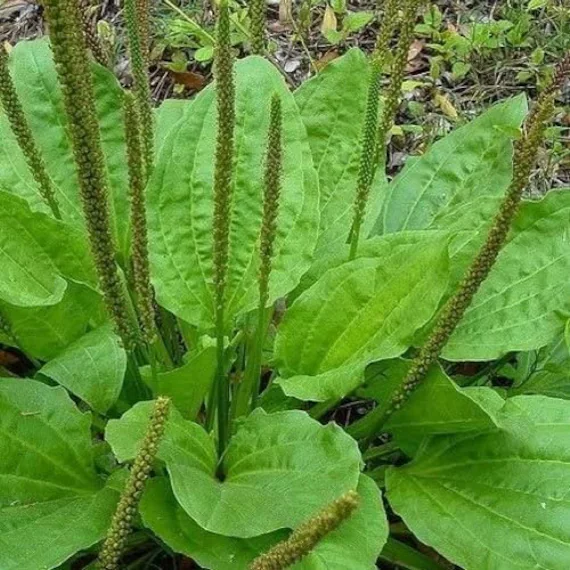
Chickweed (Stellaria media) is named for its biggest fan, chickens– they love the stuff! It’s often considered a common weed in gardens and other disturbed landscapes, as they tend to spread pretty quickly and grow in a mat along the ground. It can be brewed into a nutritional tea, or used topically as a gentle, soothing remedy for minor scrapes and wounds. It can reduce inflammation and irritation of the skin from ailments such as insect bites. Though chickweed is most commonly found in the springtime, when it's most tender, it can still be found in the summertime.

The plant salve I made recently combines plantain and chickweed, for a topical salve to soothe irritated or wounded skin, remove impurities, and promote healing. Other ingredients in the salve include a carrier oil of choice– I used a high quality, organic olive oil– and local beeswax, to harden the oil into a salve. To make my plant salve, the plantain and chickweed is harvested, cleaned gently, and allowed to wilt on the counter overnight. Then, it's chopped into small pieces and crammed into a jar, and enough olive oil is added to the jar to cover the plants. This jar sat in a sunny windowsill for about a week, infusing the olive oil in all that medicinal plant goodness.
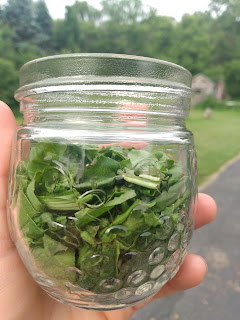
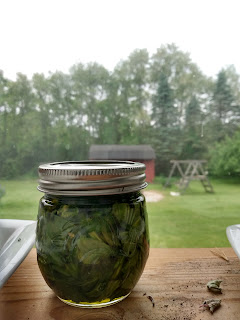
After a little more than a week, the plant material was strained out of the now-infused olive oil (I squeezed the plant material to get as much oil out as possible!). Next, I prepared my beeswax. I didn’t have beeswax pellets, but I did happen to have a few candles made from local beeswax, so I made it work by gently scraping the wax apart.
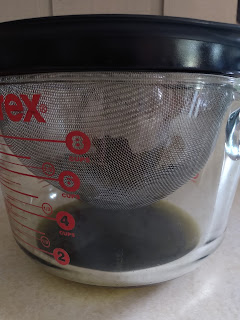
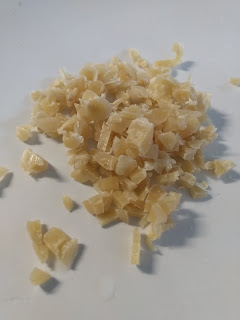
Next, the infused oil was gently heated over the stove: once it was warm, I stirred in the beeswax. I added about two tablespoons of wax for every cup of infused oil, but I might add a little more wax next time for a slightly firmer salve consistency. The thickness of the salve can be tested by pouring a small amount over a chilled spoon, like one might do to test the thickness of a jelly. When the salve reaches a good consistency, it can be poured into a tin or jelly jar to cool-- and it's done!
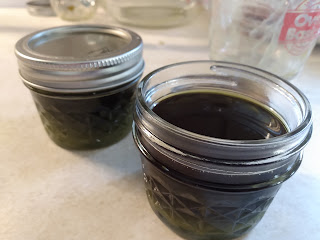
I've been storing my salves in the refrigerator to keep them extra firm, and using them whenever I need a little extra healing power. They're gentle and fast-acting for cuts, scrapes, splinters, and more! I even had a chicken with an injured foot that I used my salve on, and it helped to draw dirt and infection from the wound and promote healing.
Making your own medicinal salve is a great way to connect with your landscape before the fall harvest. To learn more about medicinal plants and growing herbs, explore the All About Herbs class from Universal Class, free to Cromaine Library cardholders! Also, should you wish to explore more plant salve recipes, Mountain Rose Herbs has a wonderful guide to making a basic plant salve, with tips including three different ways to make herb-infused oils and how to get the best consistency in your plant salve.
Enjoy all that your garden has to offer, and have a beautiful summer!